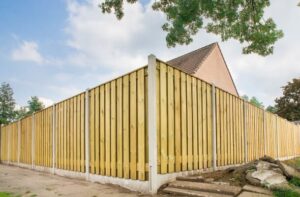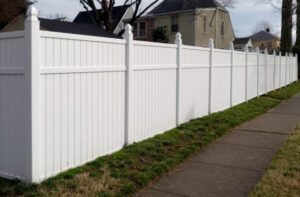Everything About Quincy, Massachusetts
History
Quincy, nicknamed the “City of Presidents,” is rich in history. It is named after Colonel John Quincy, grandfather of President John Quincy Adams. Quincy was first settled in 1625 by English Puritans led by Richard Warren. It was officially incorporated as a separate town in 1792 and became a city in 1888.
For most of its early history, Quincy was primarily an agricultural community. However, by the 19th century, it had become an important shipbuilding center and granite quarrying hub. The famous granite quarries of Quincy yielded the granite for a number of iconic buildings in Boston, including the Bunker Hill Monument.
Some key historical events in Quincy:
- 1625: First settled by Puritans
- 1775: The first hostile act of the American Revolution took place in Quincy, as militia fought British troops at Squantum.
- 1825: The Erie Canal opened, facilitating trade and accelerating Quincy’s growth.
- 1826-1848: Quincy native John Quincy Adams serves as 6th U.S. president.
- 1888: Quincy becomes a city.
- 1926: Quincy shipyards launch USS Salem, the US Navy’s first heavy cruiser.
- 1963: The Fore River Shipyard closed, ending Quincy’s shipping era.
Quincy has a rich political history. In addition to President John Quincy Adams, it was also home to John Hancock, second president of the Continental Congress and first signer of the Declaration of Independence. Other notable politicians from Quincy include President John Adams, abolitionist leader Charles Sumner, and several Massachusetts governors.\
Geography
Quincy, Massachusetts is located 9 miles south of downtown Boston on the south shore of greater Boston. It is situated on Quincy Bay, part of Massachusetts Bay and Boston Harbor.
According to the United States Census Bureau, the city has a total area of 26.9 square miles, including 16.8 square miles of land and 10.1 square miles of water. A large section of southwestern Quincy is located on the Squantum Peninsula, where the beaches of Quincy Bay and Dorchester Bay can be found.
Quincy shares land borders with Boston to the north, Milton to the west, Randolph and Braintree to the south and Weymouth (neighborhoods of South Weymouth and East Weymouth) to the east. Surrounding waters include Quincy Bay to the north, Dorchester Bay to the east and the Neponset River to the west.
Some notable natural features and conservation lands include the Blue Hills Reservation, Squantum Point Park and Wollaston Beach.
Geology
Quincy’s terrain reflects its geographic location on the low-lying Boston Harbor peninsula. The city is generally flat or gently rolling, with more pronounced hills and rocky ledges in the western part of the city.
The bedrock geology of Quincy mainly consists of deformed Proterozoic Z igneous and metamorphic rocks. The most common type is the Quincy granite, which was quarried extensively for monument and building stone. The granite outcrops are intruded with other igneous rocks like gabbro, diorite and even lamprophyre.
During the Pleistocene epoch, Quincy was covered by thick glaciers. As the glaciers melted, they deposited thick layers of gravel, sand and silt, resulting in excellent soils for farming. These glacial deposits are up to 200 feet thick in some parts of the city.
Along the shorelines, the retreating glaciers left behind drumlins (elongated hills), eskers (ridge deposits) and outwash plains. The ocean has reworked some of the unconsolidated sediments, creating the bay’s beaches and tidal mudflats. The isostatic rebound from the melted glaciers is still causing a net uplift of around 1 foot per century in the Quincy region.
Neighborhoods
Quincy is divided into numerous distinct neighborhoods, including:
- Adams Shore: A coastal neighborhood along Dorchester Bay, containing the beach communities of Germantown, Southerton and Parkwood. Home to Quincy Shore Drive, Wollaston Beach, and the Kennedy Memorial Skating Rink.
- Quincy Center: The heart of downtown Quincy and its central business district. Features Quincy City Hall, the Church of Presidents and Quincy Marketplace.
- Wollaston: A densely populated residential area with various parks, shops and restaurants. Includes Wollaston Beach.
- Merrymount: Located on Quincy Bay, this neighborhood contains the Fore River Shipyard and Squantum Point Park.
- Montclair: A primarily residential neighborhood inland from Wollaston Beach.
- Atlantic: A small waterfront neighborhood north of Quincy Center on Quincy Bay.
- West Quincy: A largely residential area along the Neponset River, dotted with commercial districts along Hancock Street.
- Houghs Neck: A peninsula community northeast of Quincy Center, home to scenic Houghs Neck Beach. Known for its natural beauty.
- Marina Bay: The site of an extensive redevelopment project in the 1980s. Now features restaurants, shops, offices, hotels, housing and recreation facilities.
- North Quincy: Borders Boston and Milton along the Neponset River. Mix of business and dense residential development.
Climate
Quincy has a humid continental climate with warm, wet summers and cold, snowy winters. Given its coastal position, the climate is moderated by the nearby Atlantic Ocean.
The average temperature ranges from 25.4°F in January to 73.4°F in July. Winters see highs mostly in the 20s and 30s °F with lows averaging 9°F. Spring and fall seasons are mild. Summers are hot and humid, with temperatures often peaking above 90°F.
Rainfall averages 43.4 inches per year and is distributed fairly evenly throughout the seasons. Snowfall averages around 40 inches per year, with the majority occurring from December to March. Coastal storms, including hurricanes and nor’easters, can occasionally cause flooding and damage in Quincy.
Demographics
As of 2021 census estimates, Quincy had a population of 97,256, making it the 8th largest city in Massachusetts.
Around 52% of residents are non-Hispanic white, while 31% are Asian, 8% black and 4% Hispanic. The Asian community is notable for its diversity, including sizable Chinese, Vietnamese and Indian populations. Many residents have Irish, Italian or other European ancestry.
At 38.1 years, Quincy has a slightly older median age compared to Massachusetts overall. 22% of the population is under age 18 and 15% is age 65 or older.
There are around 41,000 households in the city. 30% of households have children under 18. 69% are owner-occupied units versus 31% renter-occupied. The median household income is around $77,000.
Quincy is densely populated with over 4,500 people per square mile. Population density peaks inside neighborhoods like Quincy Center and Wollaston.
The city has a large immigrant population, with over 30% born outside the United States. The most common countries of origin are China, Vietnam and India. Nearly half of residents speak a language other than English at home.
Economy
Quincy has a diverse economy including various industries, companies and businesses. Healthcare, education, financial services, retail and manufacturing are all major sectors.
Some of the largest employers in Quincy are Boston Scientific, State Street Corporation, Walmart, Boston Financial Data Services and Stop & Shop. The city is also home to over 2,000 small businesses.
Former economic drivers like granite quarrying and shipbuilding have declined, while sectors like information technology and financial services have grown. Tourism is also an important industry given Quincy’s unique historic and natural sites.
Quincy’s unemployment rate is currently around 3%, on par with state and national averages. Median household income is slightly above the rest of Massachusetts. Poverty rates are lower than the U.S. average.
Commercial districts can be found throughout the city, including Quincy Center, Wollaston and North Quincy. The Marina Bay neighborhood contains many shops, restaurants, hotels and offices.
Revitalization projects in downtown Quincy have added new housing, retail, recreation and transit with the goal of spurring economic growth. The city also aims to attract tech companies and create an “innovation district.”
Culture
Quincy has a rich cultural identity and civic pride as a historic New England city. Residents maintain various traditions and community events.
Because of its unique architecture and role in American political history, Quincy is nicknamed both the “City of Presidents” and “Birthplace of the American Revolution.” Historic preservation has been a major focus.
Arts and entertainment venues include the Quincy Community Theatre, Woodward School for Girls, Thomas Crane Public Library and several museums. The city holds popular annual events like Fourth of July fireworks, Flag Day parades and the Christmas Parade of Lights.
Given its diversity, Quincy offers an array of cuisines and restaurants. Chinese, Vietnamese and Indian food are especially abundant and authentic. Italian, Irish pub fare, seafood, pizza and fine dining are also popular.
Sports are a big part of local culture as well. Residents avidly follow the Boston professional teams, especially the Red Sox, Patriots and Bruins. Youth and school sports like hockey, soccer, football and baseball are widely played.
Colleges and Universities
Quincy is home to several institutions of higher learning:
- Quincy College: A two-year community college offering associate’s degrees and certificates in subjects like liberal arts, business, healthcare and nursing.
- Eastern Nazarene College: A private four-year liberal arts college affiliated with the Church of the Nazarene. Offers programs in fields like ministry, education, business, nursing and biology.
- Quincy University of Chinese Medicine: Teaches acupuncture, herbal medicine and Tuina bodywork at the graduate level.
Other nearby colleges and universities easily accessible from Quincy include Harvard University, Boston University, Northeastern University, UMass Boston and the Boston Architectural College.
Local public schools are operated by Quincy Public Schools district. There are seven public high schools, nine public middle schools and numerous elementary schools. Private and parochial schools are also available.
Media
Quincy is served by various print, television and online media:
- The Quincy Patriot Ledger: The city’s most widely circulated newspaper, published daily. Owned by Gannett.
- The Quincy Sun: A weekly community newspaper covering local news.
- Quincy Access Television: The local public-access cable TV channel on Comcast Xfinity. Produces original programming.
- WJDA: 1300 AM radio station broadcasting in the Quincy area. Airs news, talk and sports.
- Boston Globe: The major regional newspaper read widely in Quincy.
- WBZ Channel 4: Boston’s CBS station airing local news and syndicated shows.
- WCVB Channel 5: The ABC affiliate in Boston also popular in Quincy.
- Universal Hub: Boston area news blog with a section dedicated to Quincy news.
- Quincy Is Beautiful: Active citizen journalism Facebook group reporting on local happenings.
Roadways
Quincy is connected regionally by several major highways:
- Interstate 93: Runs north-south along Quincy’s western border, leading towards Boston and Cape Cod.
- Interstate 95/Route 128: Passes through the southwest corner of Quincy near the Braintree split. Provides access to points south of Boston.
- Route 3A: Connects Quincy to Boston, Weymouth, Plymouth and Cape Cod as a coastal alternate to Route 3 highway.
Other primary roads and arterials include:
- Hancock Street (Route 3)
- Newport Avenue
- Quincy Avenue
- Southern Artery
- Sea Street
- Washington Street (Route 3A)
- Furnace Brook Parkway
- Copeland Street
- Centre Street
Public transit is available via MBTA buses, subways and commuter rails. The Red Line runs through Quincy Center, Wollaston and North Quincy stations. Commuter rail connects Quincy to Boston’s South Station.
Major Landmarks
Some of the most famous landmarks in Quincy include:
- United First Parish Church: Where Presidents John Adams and John Quincy Adams are buried.
- Adams National Historical Park: The birthplace of Presidents John Adams and John Quincy Adams.
- Quincy Quarries Reservation: Where the granite for the Bunker Hill Monument was mined.
- USS Salem & US Naval Shipbuilding Museum: Tour a famous heavy cruiser at the old Fore River Shipyard.
- Marina Bay: A redeveloped waterfront district with restaurants, shops, offices, housing and more.
- Wollaston Beach: Over a mile of sandy beachfront along Quincy Bay.
- Squantum Point Park: Scenic former estate with a beach, nature trails and harbor views.
- Quincy City Hall: Constructed in 1844 with iconic granite and dome architecture.
Quincy’s historic buildings, lighthouses, churches, parks, memorials and natural areas also attract many visitors.
This covers the major highlights about Quincy, Massachusetts in the style of a local tour guide. Let me know if you would like me to modify or expand this article in any way!
Hours
Monday: 9:00 AM – 5:00 PM
Tuesday: 9:00 AM – 5:00 PM
Wednesday: 9:00 AM – 5:00 PM
Thursday: 9:00 AM – 5:00 PM
Friday: 9:00 AM – 5:00 PM
Saturday: 9:00 AM – 5:00 PM
Sunday: 9:00 AM – 5:00 PM
Contact Us.
Get Solutions For All Fencing Services
Every day from
9:00 — 5:00
Call to ask any question




